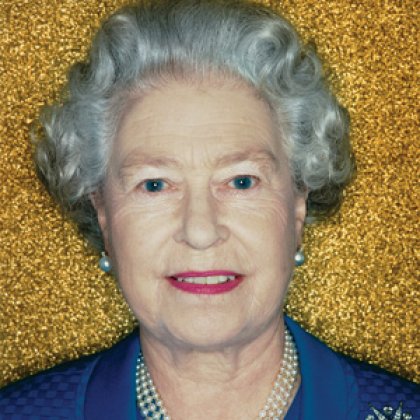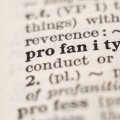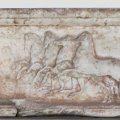
The first exhibition to survey the photographic work of Australian artist Polly Borland opens at The University of Queensland Art Museum on Saturday 1 September 2012.
Borland’s photography has straddled commercial/documentary and fine art practice, and is characterised by an edgy sensibility that lends her images tension and resonance.
Polly Borland: Everything I want to be when I grow up features Borland’s portraits of famous faces such as Cate Blanchett, Her Majesty, The Queen, and Nick Cave, and examines her series Australians, The Babies, Smudge, and her most recent series, Pupa.
The University of Queensland Art Museum Director Dr Campbell Gray said that on the surface it appeared there was a great distance between Borland’s commercial portraits and her more idiosyncratic images, but this was not the case.
“Borland is intently focused on people, their outward appearance and personae and, at the same time, their self-image, their doubts and insecurities, and the more fundamental psychologies of personality,” he said.
Borland’s photographs have featured in international journals and magazines, such as The New Yorker, The New York Times, The Independent and Dazed & Confused, she has shot album covers for Goldfrapp, lent her images to Nick Cave for the cover of his book The Death of Bunny Munro: A Novel 2009, her series Australians was exhibited in 2000 at the National Portrait Gallery (London and Canberra), Susan Sontag and Will Self have written on her work, and, in 1994, she received the John Kobal Photographic Portrait Award.
In 2001, Borland was one of only eight photographers selected to create portraits of Her Majesty, Queen Elizabeth II, for The Queen’s Golden Jubilee.
Exhibition curator Alison Kubler said thematic concerns throughout her work have included identity, the outcast, beauty and ugliness.
“Drawn to the weird and wonderful, Borland’s left-of-centre approach transforms the ordinary, even banal, into the extraordinary,” Ms Kubler said.
Borland has lived in Britain since 1989 and presently lives in Los Angeles; she will be in Brisbane for the exhibition opening.
Polly Borland: Everything I want to be when I grow up will be opened by fashion designer Martin Grant on 1 September at 5.00pm.
A publication accompanying the exhibition contains an essay by Ms Kubler and an interview with Borland and Ignacio Andreu.
Polly Borland: Fragments of a documentary, an excerpt of a documentary film to be released in 2013, directed by Alex Chomicz and produced by Meg Carlsen, is available at here; it is used with their kind permission.
Ms Borland and Ms Kubler will give a guided tour of the exhibition on Saturday, 1 September, 4pm to 5pm (Free/All welcome).
A panel discussion responding to the exhibition, with curator Ms Kubler, Associate Professor Frances Bonner (UQ) and artist Associate Professor Jay Younger (Griffith University), will be held on Thursday 6 September, 2pm to 3pm (Free/All welcome).
The exhibition is open daily at the UQ Art Museum (University Drive, St Lucia Campus) from 10am to 4pm, and is on display until 25 November 2012.
This project has been assisted by the Australian Government through the Australia Council, its arts funding and advisory body; and is supported by the Gordon Darling Foundation.
Media: Alison Kubler, Associate Curator, UQ Art Museum, and curator of Polly Borland, +61 412 804 137, +61 7 3245 6686, alisonkubler@gmail.com
Sebastian Moody, Special Projects Officer, UQ Art Museum: (Monday – Thursday only) 07 3346 8761, s.moody@uq.edu.au
Media images
A selection of images is available for print and online media news and review
http://omc.uq.edu.au/images/Borland/
By downloading the media images you are agreeing to accept the conditions outlined below.
Conditions
Images on this media site are available for promoting and reviewing the above exhibition under the ‘fair dealing’ provision of the Copyright Act 1968 and its subsequent amendments.
The UQ Art Museum does not authorise any actions that will infringe the copyright or moral rights of the artist.
.jpg)










